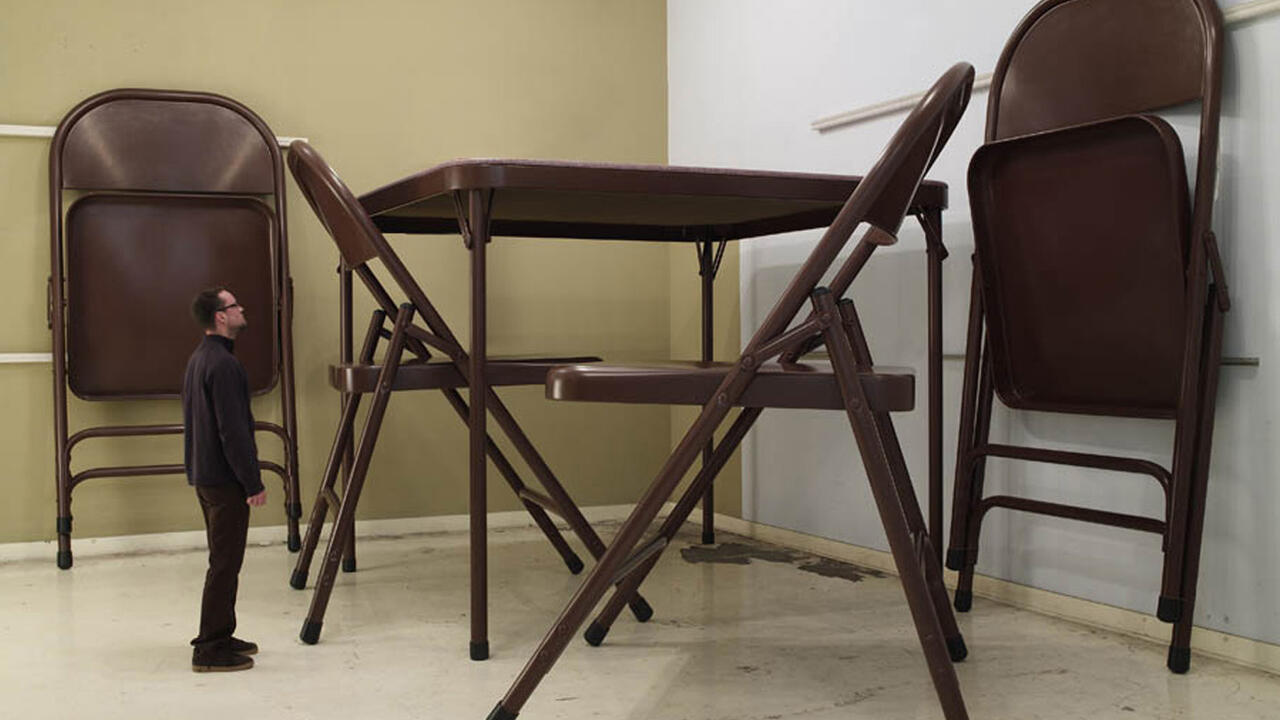Phantom Sightings : Art after the Chicano Movement
Natalie Haddad documents the exhibition acting as a corrective to the historical absence of Chicanos in mainstream America, and the museum
Natalie Haddad documents the exhibition acting as a corrective to the historical absence of Chicanos in mainstream America, and the museum

In 1972 three Los Angeles artists – Harry Gamboa Jr., Willie Herrón III and Gronk – produced what they claimed to be LACMA’s first work of Chicano Conceptualism. The artists – who comprised three quarters of the LA-based collective Asco (named after the Spanish word for ‘nausea’) – spray-painted their tags on an outside wall of the museum following a negative encounter with a curator. The gesture could have been little more than a stab at amateur revolution, trailing on the heels of the Chicano civil rights movement, but it wasn’t just an aftershock. It was a manifesto of the Chicano face of LA – individual names, but with the perpetrators nowhere in the institution’s sight.
‘Phantom Sightings: Art after the Chicano Movement’, curated by Howard N. Fox, Rita Gonzalez and Chon A. Noriega, opened with Spray Paint LACMA (1972), a photograph of the tagged wall with Asco’s fourth member, Patssi Valdez, as both a witness and an embodied Chicana presence. The photograph was one of several documenting Asco performances that, along with a video compilation, positioned the group as the forebear of contemporary Chicano art. Of the 30 or so artists in the exhibition, only two (aside from Asco) were born before the 1960s, and Chicano and Mexican artistic traditions, such as muralism and textiles, were rarely engaged at face value. If a legacy is to be found, it lies less in Chicano identity politics than in the contingency – and essential immateriality – of definition: in what Gamboa, referring to LA’s recognized Chicano population, has called a ‘phantom culture’.
Many of the show’s most evocative works dealt directly with the notion of a phantom presence. In Delilah Montoya’s large-scale photographs of desert landscapes the epic narrative of the American frontier is haunted by flags, trails of water jugs, petrol cans and, in one particularly eerie image, a solitary human shadow – all traces of another repressed narrative of border crossings. Similarly, Ken Gonzales-Day’s 19th- and early-20th-century postcards of California lynchings are digitally retouched to remove the victim (‘Erased Lynchings’, 2006–7). The postcards were here accompanied by two huge reproductions – a positive and a negative – on opposite walls, of The Wonder Gaze (St James Park) (2008). The image captures a well-dressed crowd, all the whiter in the camera’s night-time flash, gathered around a bare central tree. The body’s absence serves to deflect attention onto the wanton spectacle of the crowd and, in turn, the viewer, individualizing the abstract violence in pointed fingers and immortalized grins.

If ‘Phantom Sightings’ served as a corrective to the historical absence of Chicanos in the museum (and by extension mainstream America), it did so neither by marking Chicano identity nor by relying on the ‘hyphenated’ self of the hybrid. The result was a show in which the overarching themes of identity and presence seemed constantly in flux. While this approach tended to free the artists from the politicized Chicano body of the 1960s and ‘70s, it also raised a question: does an unmarked Chicano identity equal a whitened one?
The work of Carlee Fernandez responded with a series of photographs merging her body with life-size images, primarily of white male artists and musicians, including Franz West, Charles Bukowski and Iron Maiden vocalist Bruce Dickinson. The elegance with which Fernandez synthesizes herself and her subjects produces an identity not constituted by antagonistic binaries (male/female, white/Chicana). Instead, Fernandez performs a mutual becoming. Perhaps inadvertently, ‘Phantom Sightings’ also served as a corrective to Conceptualism’s loss of the object. The exhibition was dominated by sumptuous, intensely visual media. Carolyn Castaño’s psychedelic portraits of her friends, in glittering neon, filter traditional portraiture through a glam rock lens, at once classical and Captain Fantastic-fantastical. Likewise, Rubén Ortiz-Torres references California/Tijuana Kar Kulture, and the cloud of pollution that looms over the region, with disarming grace. The monumental Smog (2006), painted with a special car enamel, Kameleon Kolors, takes its cue from Colour Field painting. Smog’s enamel renders a protean (outer) space that shifts from greenish to brownish depending on the light and the viewing angle, a shimmering reminder that engagement is never static.
Inevitably, the latitude of the exhibition also allowed for some less effective works. But, given the curators’ task of representing a ‘post-collective’ presence, a more cohesive show would be difficult to imagine – and probably insufficient. One of the first pieces the visitor sees is a photograph of an Asco performance from 1974, entitled Instant Mural, in which Gronk tapes Valdez to the wall of an underpass. With a nod to Georg Hegel’s master–slave dialectic, the duo hijacks Chicano oppression. No Virgin of Guadeloupe, no workers, no muralist tropes, just a makeshift tableau vivant, which in an instant could be gone. And as the act performs their disappearance, it simultaneously lays bare the weapon: unmarked by definition, the phantom is everywhere.
'Phantom Sightings: Art after the Chicano Movement' was on view at LACMA, Los Angeles from 6 April to 1 September, 2008.
Main image: Asco, Gronk and Patssi Valdez in Instant Mural, 1974, photograph. Courtesy: © Harry Gamboa Jr.






















